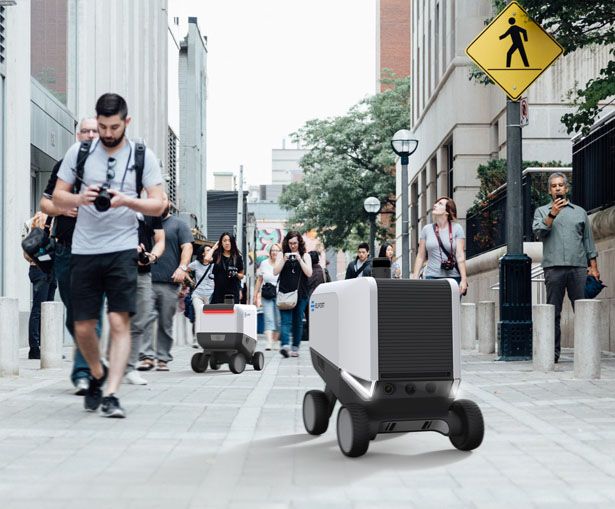A Day Without Drivers - Brought To You By The Dav Network

In the near future consumers and businesses will complete their entire day using fully automated and autonomous transportation systems. Large metropolitan areas like Los Angeles are in the beginning stages of planning and have timelines of only 6 years.
A fully autonomous transportation system will have an enormous impact on the way we live. It will affect how we get places, how products get to us, and even how the world around looks.
In 2016, Dubai announced a plan to make 25% of passenger journeys to autonomous vehicles by 2030. In response to this the developer building the 500-home mixed-use Sustainable City tract within in the Dubailand theme park project stated they will collaborate with the Road and Transport Authority to create an AV testbed and infrastructure project.
Surprisingly, most cities have been researching autonomous networks for past three years and have identified the most highly anticipated uses. The chart below, courtesy of Bloomberg.com, shows that passenger transit comprises 7 of the 9 uses.

Credit: Bloomberg.org
This makes sense because most major cities have an issue with traffic. In studies conducted by Dubai, the results showed that by utilizing AVs for 25% of passenger journeys transportation costs will be reduced by 44% and over 396 million person-hours will be saved from reduced time sitting in traffic.
What would a day without drivers look like?
Let's take a look at what a day would look like if cities had the necessary infrastructure and technological framework to operate a completely autonomous transportation system.
The city could be integrated with the DAV Network, a blockchain based platform that allows AVs to discover, communicate, and transact with each other, consumers, and service providers.
DAV Network is an open-source decentralized project that turns every entity (vehicle, user, service provider) into an off-chain node that can be found by other entities. This is the first key to an autonomous transportation system.
For example, Doug is a shipping manager at a local hardware store. His job is to send correct orders out to be delivered. In the old days, Doug used to have to schedule drivers, provide shipping docs, and invoice payments.
Today, Doug uses an app that his hardware store has purchased that integrates shipping with the DAV Network. Doug receives an order for two eight foot long 4x4s and two boxes #8 stainless steel nails. When the order is filled and ready to be shipped, Doug logs onto the which has an appearance similar to Uber.
Doug is acting as a node (via his computer) and sending out a discovery request for the closest available vehicle that can deliver the cargo. When a vehicle responds to the discovery request it communicates with Doug, creates and creates an itinerary.
The vehicle arrives at the hardware store and is manually loaded. The vehicle pings the customer with the anticipated arrival time and begins its delivery. When the product is delivered to the customer the vehicle's owner receives payment from the hardware store in DAV tokens. The customer is billed for shipping in USD.
Time for lunch.

The restaurant receives the order, prepares the food, and begins the delivery. Due to their location inside of a food court, the delivery must use multiple vehicles. The restaurant's app communicates with multiple vehicles creating a synced itinerary.
The first vehicle that picks up the food is a form of an automated cart. The cart drives the food to the designated drone pickup area which doubles as a charging station. The assigned drone, now fully charged, picks the food up from the cart and delivers it to Doug.
The picture is getting clearer

In the lunch example payments are being dispersed from the user to two different vehicles, and the drone is also responsible for paying the charging station for electricity. The communication and execution are made possible by DAV Network and its five-piece technology stack.
The full tech stack includes providing identities to each entity. These identities allow each entity to be discovered by other entities. Once discovered the entities can communicate with each other and develop a mission flow (itinerary). Lastly, DAV Network allows for automated payments via smart contract.
DAV is preparing itself to be at the forefront of the autonomous vehicle revolution that will take place right before our eyes. The DAV Foundation plans on working with cities, hardware providers, and private companies to construct infrastructure, pass-friendly ordinances, and promote AVs.
More Information
📅Token Sale Date: Opens June 11, 2018.
DAV Website ||Whitepaper ||Telegram || Bounty
Keep up with me:
Steemit || Twitter || Telegram Group || BitcoinTalk Profile

Cover photo credit: tuvie.com